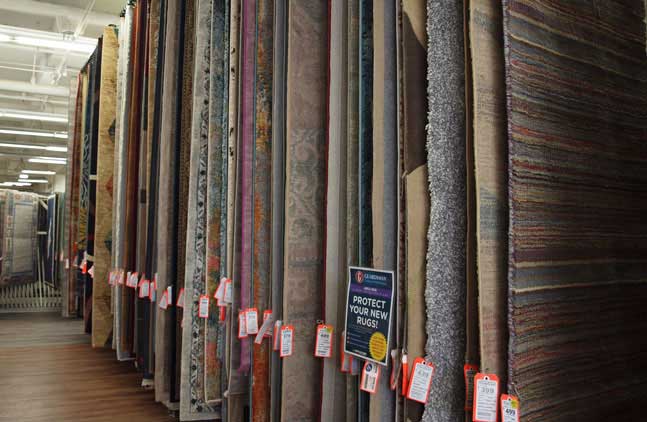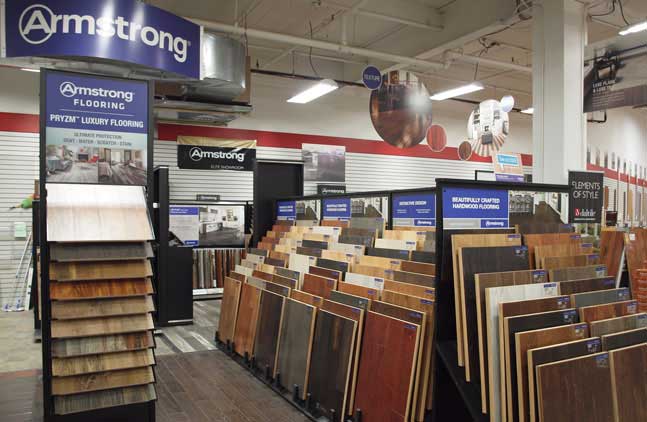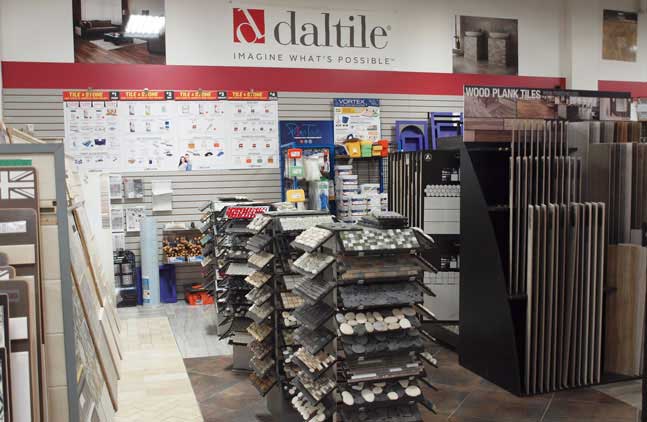Putting rugs over your hardwood floors is a no-brainer. Rugs protect flooring from scratches, stains, and other signs of wear. But should you try putting rugs over wall-to-wall carpeting too? Since they have the same or similar textiles, you may be wondering how layering a rug over a carpet can benefit your space.
There are plenty of reasons why you should consider layering a rug over carpeting in your home. Protection, style, insulation, and cleanliness are all benefits of utilizing rugs in high-traffic carpet areas. Plus, rugs are a lot more affordable than replacing carpeting.
If you're interested in elevating your home's style or you want to keep your carpeting in top condition, you should consider placing rugs in strategic places all over your home. We'll go over why, where, and how you should lay an area rug over the carpet. We'll also go over popular rug types that will work well when paired with your carpet.
Why Should You Put an Area Rug Over Carpet?
There are a few obvious reasons why you may want to place an area rug over the carpet in your home. For instance, if you're renting and cannot replace old carpets. Or, if you have stains and discolorations in certain areas of the carpeting but don't want to pay to replace the whole carpet just yet. Rugs can be a quick and temporary solution.
However, if you love your current wall-to-wall carpeting, you should still consider placing rugs at various points in your home. Rugs insulate your flooring and prevent wear and tear damage in high-traffic areas. They also help to protect your carpet from stains, discoloration, and accumulating dirt.
For carpeted bedrooms on the second floor, rugs can act as extra insulation to decrease any noise that might be noticeable on the first floor. The extra insulation can also help on cold winter days by adding an additional warm and cozy layer to the flooring.
For high-traffic areas, like hallways, dining rooms, living rooms, and entryways, rugs can protect your flooring from common signs of wear. Rugs can also make it easier to clean in these busy areas, especially if you have plush or high-pile carpeting, as these types of carpet can collect dirt easily. A durable low-pile rug placed near the backdoor or foyer can make it easier to keep your floors clean.
Another important reason to consider layering a rug over carpeting is the pop of color and design. While many designers often recommend neutral colors for long-lasting floors like hardwood, tile, or carpeting, rugs are more affordable and easy to change. So, if you want to experiment with your home's interior style, add a rug with bright contrasting colors or an interesting pattern to elevate the overall style of the space.
How Should You Lay an Area Rug Over the Carpet?
To prevent the rug from wrinkling or moving around on the floor, you should use a rug pad in places with no furniture. Rugs placed in hallways, foyers, and entryways will benefit from having a non-slip pad underneath them. In places like living rooms, dining rooms, and bedrooms, you may not need a rug pad if you place the rug underneath furniture. To prevent the corners of the rug from bunching, it's best to have all four corners anchored by the furniture legs.
What Kinds of Rugs Work Best Over Carpet?
When you consider placing an area rug over the carpet, you should think about the existing decor elements of the space. Features like existing carpeting, furniture, drapes, artwork, and paint colors should all work together with any rug to create a stylish and comfortable space. When you shop for a rug, you should think about its style (pattern, texture, color, shape). Additionally, you should also consider its practical features (maintenance, care, and durability).
In terms of style, there aren't a lot of rules surrounding rugs. You can opt for bold, neutral, classic, or modern. As long as it ties in with other design elements of the room, you can choose a rug that stands out as much as you want.
However, if you're planning on placing rugs in high-traffic areas, there are other considerations that you'll need to take into account before selecting an area rug over the carpet in your home. A low-pile rug is often the best choice for busy areas that see a lot of traffic. Compared to high-pile rugs, they are much easier to keep clean and don't show imprints from wear or furniture as much.
Additionally, you should consider the materials used in the construction of the rug. Synthetic materials are easy to clean, plus they are resistant to moisture and dirt. Fibers, like wool, can be trickier to clean and maintain. So if you're looking for the most durable, easy-to-clean, and lowest maintenance option, going with a synthetic, low-pile rug will be the best choice for high-traffic areas. This low-pile polypropylene rug is incredibly durable and perfect for high-traffic areas in your room.
Choosing to place rugs strategically in high-traffic areas in your home is a smart idea, no matter your flooring. Whether you have hardwood, tile, laminate, or carpeting, area rugs can provide protection from daily wear, stains, dirt, and more. Since switching out rugs in your home is much easier and more affordable than replacing carpeting, you'll be able to choose interesting patterns and bold colors to add a lot of style to your space. Also, you'll have all of the benefits of rugs, such as added insulation and noise reduction. We have a lot of area rugs that are perfect to layer over carpeting in high-traffic areas so you can protect and extend the lifespan of your carpeting.
















